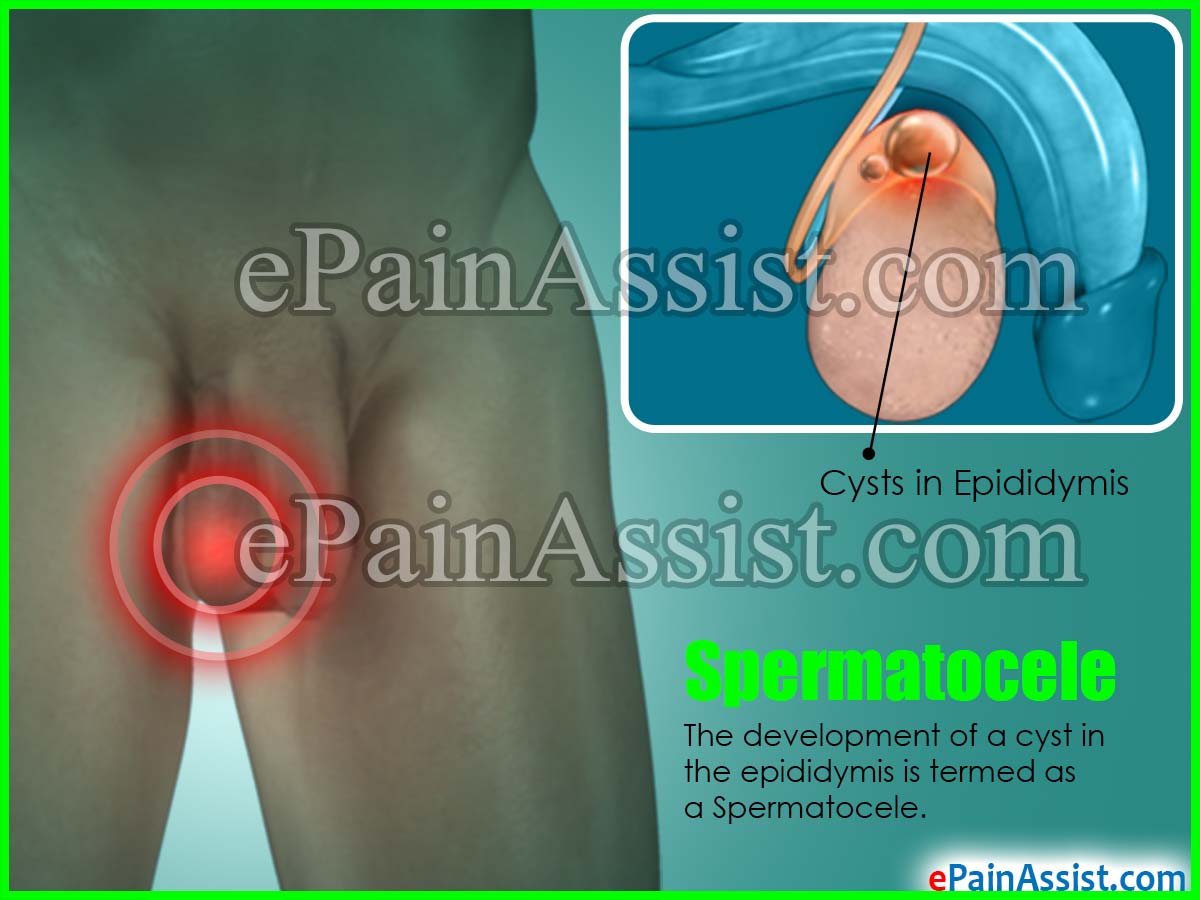What Is Fibrocystic Spermatocele?
The development of a cyst in the epididymis is termed as a Spermatocele. The epididymis is a small tube like structure which is situated on the upper part of the testicle whose function is to collect and transport sperms. Spermatocele is usually benign and is not painful. The abnormal sac is usually filled with milky or clear fluid, which may or may not contain sperms in it. The root cause of this condition is not well known but studies suggest that it may be caused due to some sort of blockage in the tubes that transport the sperms. This condition is quite common and does not require any specific treatment. It also does not affect the fertility of an affected individual. A surgical treatment may be required if the size of the cyst grows abnormally large.

What Are The Causes Of Spermatocele?
As stated, the root cause of Spermatocele is not well known. Some studies suggest that it may be caused due to some blockage in the tubes present in the epididymis which stores and transports sperms. It may also be caused due to a trauma or injury like being hit in the testicle by a ball resulting in blockage.
What Are The Symptoms Of Spermatocele?
Spermatocele generally is asymptomatic and does not change much in size. In case if it increases in size it may cause the following:
- Pain or discomfort in the testicle
- Sensation of feeling heavy on the affected testicle
- Presence of a mass behind or above the testicle.

How Is Spermatocele Diagnosed?
In order to diagnose a Spermatocele, the treating physician will conduct a detailed physical examination of the entire genital area to look for masses or areas of tenderness and pain. There will be slight pain felt with palpation of the affected area. Additionally, the treating physician may conduct the following diagnostic studies:
- Transillumination: In this procedure a light is passed through the scrotum examining the entire area. If there is presence of Spermatocele, it will be clearly seen by this method.
- Ultrasound: If the Transillumination method is not able to identify the cyst clearly then an ultrasound may be conducted to look at the internal structures of the scrotal area to identify a cyst. This method will also help in ruling out other causes of symptoms like testicular tumor as a cause for the symptoms.
What Are The Treatments For Spermatocele?
Spermatocele does not go away on its own but they are generally harmless and not painful. If an individual has a Spermatocele that causes pain and discomfort then over the counter pain killers like Tylenol or ibuprofen might be helpful.
Surgery For Spermatocele: if the above method does not relieve pain and discomfort then the treating physician may recommend a surgical procedure called Spermatocelectomy to get rid of the cyst. This procedure is done on an outpatient basis utilizing general anesthesia. A small incision is made in the scrotum and the cyst is separated from the epididymis, thus getting rid of the cyst. Postsurgery, the surgeon may recommend wearing a supporter for some time till the wound heals and protect the area where surgery was performed. The patient will also be asked to apply ice packs to the affected area for 15 to 20 minutes two to three times a day to help with pain and swelling. The patient will be prescribed pain medications for a few days for postoperative pain control. The patient will be asked to followup in a couple of weeks postsurgery for a regular checkup.
A possible complication from the surgery for Spermatocele is that it may affect the fertility of the individual along with damage to the epididymis or the vas deferens. Spermatocele is a condition which might recur even after surgery is performed.
Aspiration With Sclerotherapy For Spermatocele: Another mode of treatment for Spermatocele is aspiration. In this method, a needle is inserted into the epididymal area and the fluid is drained using the needle. This method may have to be repeated in case Spermatocele recurs. Once aspiration is done again, the surgeon may inject an irritating agent into the sac which over time forms scar tissue which takes up the place in the sac thus lowering the risk of recurrence. This method also carries a risk of damage to the epididymis. This method also called as Sclerotherapy is only done for those males who have crossed their age of reproduction.
Home Remedies For Spermatocele
Studies suggest that Spermatocele can be treated naturally by adopting a balanced diet which does not have high fat content in it. In addition, other supplements and topical applications like iodine, magnesium, and chromium chloride can be used for treatment of Spermatocele. Studies have shown that iodine is a very effective agent for treating Spermatocele. Usually, Cysts develop due to a deficiency of iodine; therefore, if a diet rich in iodine content is adopted then it goes a long way in preventing and treating Spermatocele. In case of a cyst develops then iodine can be applied topically to the cyst which then infiltrates the skin and enters the cyst and decreases the size of the cyst significantly.
